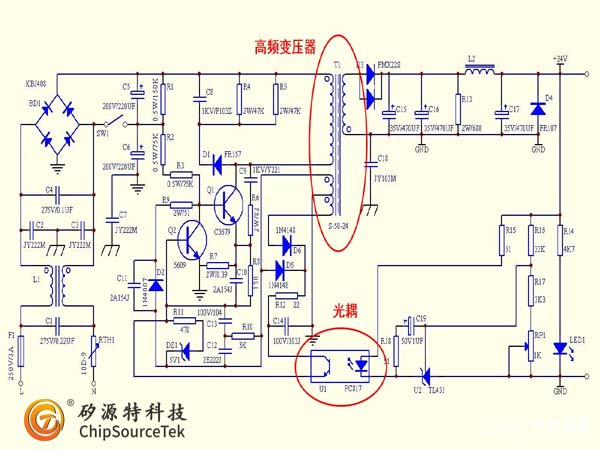Understanding FFT diagrams
Time:2024-02-14
Views:208
You can generate FFT graphs by periodically collecting a large number of ADC output conversion samples. Generally speaking, ADC manufacturers use a single tone, full range analog input signal as a typical performance curve in their product manuals. You obtain data from these transformations and then draw a graph similar to Figure 1. The frequency scale of this graph is always linear, with sampling frequency from zero to 1/2 of the converter.

By applying a sampling frequency of 100ksps to a 12 bit ADC of a 9.9 kHz analog input signal, you can obtain the FFT graph in Figure 1. The signal at 9.9 kHz is the basic input signal (A). The basic input signal is parasitic close to 0 dB.
The four specifications in the FFT diagram include the basic input signal, signal-to-noise ratio, total harmonic distortion, and average noise threshold.
An effective method to determine the noise level in an ADC circuit is to use signal-to-noise ratio (B). Signal to Noise Ratio (SNR) refers to the ratio of signal strength to noise strength. The SNR calculated by FFT is a combination of several noise sources. Possible noise sources include ADC quantization error, ADC internal noise, reference voltage noise, ADC differential nonlinearity error, and driver amplifier noise. The theoretical limit of signal-to-noise ratio (SNR) is 6.02n+1.76 dB, where n is the number of converter bits.

Figure 1 shows a total of 4096 datasets for the 12 bit converter in the FFT image
Total harmonic distortion (C) quantifies the number of distortions in the system. Total harmonic distortion (THD) is the ratio of the sum of the root mean square (rms) strengths of harmonic components (parasitic signals) to the strength of the input signal. The parasitic signal generated from the nonlinearity of the A/D converter appears in the form of an integer multiple of the input signal frequency (base frequency). Most manufacturers use the earliest 7 to 9 harmonic components in their THD calculations.
If the A/D converter generates parasitic signals, it may have some integral nonlinear errors. In addition, parasitic signals will come from input signals through signal sources or driving amplifiers. If the input signal generates parasitic signals, they are likely not related to the frequency of the basic frequency. If the driving amplifier is the culprit, it may have cross distortion, be unable to drive the ADC, or be limited by bandwidth. Injected noise from other parts of the circuit (such as digital clock source or power frequency) can also form parasitic signals in FFT results.
In the FFT representation of converter data, the average noise threshold (D) is the square root combination of all bins in the FFT graph, but does not include the input signal and signal harmonics. You should balance the selection of sample count and ADC bit count, so that the noise floor is below all relevant parasitic signals. Considering these factors, the theoretical average FFT noise threshold (dB) is 6.02n+1.76 dB+10 log [(3 × M)/(π × ENBW)], where M is the number of FFT data points, ENBW is the equivalent noise bandwidth of the window function, and n is the number of ADC bits. The reasonable sampling quantity for a 12 bit converter FFT is 4096.
|
Disclaimer: This article is transferred from other platforms and does not represent the views and positions of this site. If there is any infringement or objection, please contact us to delete it. thank you! |











